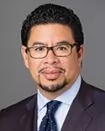This week reports surfaced that a major shift in the SEC enforcement division had taken place – behind the scenes. The timing is quite interesting as the agency's annual seminar and SEC Alumni dinner will occur at the end of the month. No doubt this will be a topic, among many, of the annual SEC cocktail regulars in DC.
The reports indicate that the Acting Chairman Michael Piwowar has centralized the power of the enforcement division to "issue subpoenas or formally launch probes," as Reuters put it. The question that has been asked is – What does all of this really mean, really?
Historically, the SEC was a bureaucratic and highly centralized agency. Prior to 2009, the authority to commence a formal order investigation rested in Washington, DC. My perception, as a former member of the enforcement division, was that the SEC, unlike criminal law enforcement, was much more selective of the cases that it brought, recognizing the impact that a mere investigation would have on market participants. Within the context of the SEC's structure, 11 regional offices essentially reported to Washington. The benefit of this approach was a more consistent and, perhaps, uniform approach to enforcement decisions. Meaning, that it did not matter whether the request for an investigation commenced in Philadelphia or Atlanta or Los Angeles. The same person or group of persons were evaluating the cases and understood at a high level how the investigations fit within the overall enforcement mission or priorities. The shift to a central control results in better policy and more predictable enforcement division decisions. In theory, it does not mean the launching of fewer SEC enforcement cases.
As reported, in 2009, former SEC Chairman Mary Schapiro changed the policy and pushed out the authority to grant formal order subpoena power out to more senior members of the enforcement division who were closer to the action, namely the associate directors of the SEC across the regional offices. The changes were part of the "Post-Madoff" reforms that were designed to reduce the chances that ongoing fraudulent activity would go undetected.
The Acting Chairman appears to be returning to the roots of the SEC, centralizing the power and oversight back to the most senior ranks of the Enforcement Division and the Commission itself.
The return to the good old days when I was in the Commission suggest that the SEC will take longer to make enforcement decisions and that fewer cases may be opened, but that is not a foregone conclusion. Data reported by Cornerstone Research suggests that following the 2009 policy changes, there was a significant jump in formal orders from 233 to 496. It may be the case that these numbers were a product of the paranoia of the time. Interestingly, the data that followed the next several years showed a decline in enforcement actions. This comparison reflects that the enthusiasm waned over time or that the policy change acted as a deterrent, or maybe none of the above.
The bottom line is that the decision to centralize authority in DC may reflect a return to a more traditional role of the Commission – more regulator and less prosecutor. Perhaps, a particularly revealing decision will be new Chairman's selection of Enforcement Director; does he select a former prosecutor or a former SEC enforcement attorney? Additionally, we will look to see if the new Chairman rolls back some of the policies borrowed from the DOJ like the use cooperation agreements with individuals. Clearly, the times are changing, to paraphrase Dylan, but the SEC appears to be returning to its roots.
Duane Morris Associate Jovalin Dedaj also contributed to this blog post.
Disclaimer: This Alert has been prepared and published for informational purposes only and is not offered, nor should be construed, as legal advice. For more information, please see the firm's full disclaimer.

